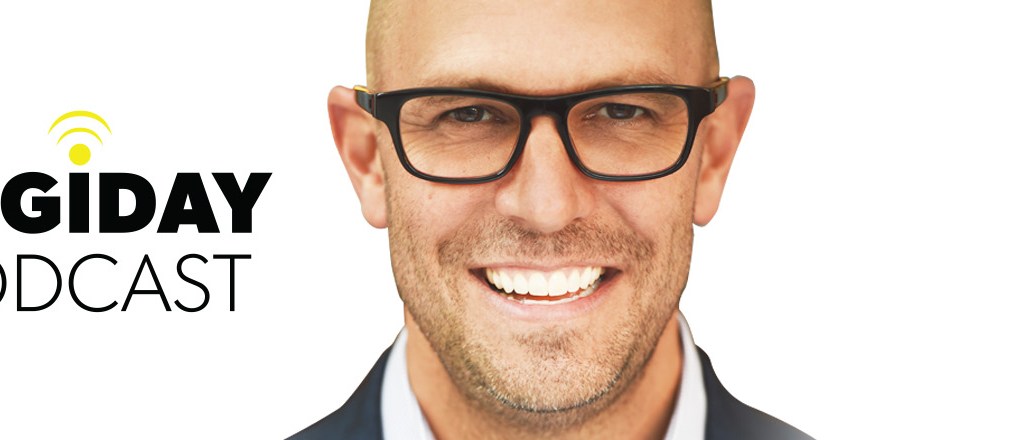Save 50% on a 3-month Digiday+ membership. Ends Dec 5.
Truffle Pig’s Paul Marcum: Snapchat can break Google-Facebook duopoly

Subscribe: iTunes | Stitcher | RSS
If the first month of 2017 is any indication, all eyes will be on Snap Inc. to prove that it’s worth the hype.
In the company’s corner: Paul Marcum, president of Truffle Pig, a content-marketing agency launched as a joint venture between ad conglomerate WPP, The Daily Mail and Snapchat in 2015. In a time when Google and Facebook have a stranglehold on the digital ad market, Snapchat has the potential to be the emerging social platform that breaks the so-called “duopoly,” according to Marcum.
“The industry wants them to be a third leg of the stool — who doesn’t?” he said on this week’s episode of the Digiday Podcast. “In terms of building out new experiences, which are obviously being [copied] by others, and also just in terms of being able to deliver great and efficient reach, that’s a likely outcome.”
Since launching at Cannes Lions in 2015, Truffle Pig has grown to 20 employees nationwide creating social campaigns for clients ranging from NBCUniversal to PayPal. And while 60 percent of the agency’s work is still on Snapchat, Truffle Pig is also producing content for other platforms and formats including Facebook Live and Instagram.
Other highlights from the episode, lightly edited for clarity:
Ad position: web_incontent_pos1
Snap Inc. is a hands-off investor
I think Evan [Spiegel] might have higher priorities this year than Truffle Pig. We work with the folks on the ad sales and creative strategy side as we identify what our clients need and where those opportunities are. … I would love to have an open view into the roadmaps of any one of our partners or any one of the destinations where our advertisers or clients want to go. We’re not going to get it. That said, you see what’s working both for your client but then also in general with users on the platform. If you’re paying close enough attention, you’re going to see where the trend lines are going and how to follow that.
Snapchat’s audience is growing, but maybe not among younger users
The data that I have seen shows penetration against certain segments. They may have reached the top for growth among the youngest audience, which makes sense since that’s where they started, but they’ve continued to grow in the older segments. And then, of course, there’s international growth. I don’t have a different number for you from that 150 [million daily users,] but certainly there’s been growth against those other areas.
Snapchat users are five to 10 times more likely to watch branded content
You can see a higher rate of engagement across virtually every one of our content partners that we’re working with. Whether it’s just in terms of reach, because even though it’s difficult to get your audience built on the platform, there’s not an algorithm controlling what percentage of those audience members are going to actually see the content. So in terms of a tune-in rate, that’s likely going to be higher than what you’re seeing on other platforms. In terms of completion rate, people who are going to watch the entire snap story, that’s much higher than what we’ve seen on other platforms. If you’re talking about organic, you’re really looking at those two measures as being much higher than comparative opportunities on other platforms.
Facebook isn’t undercutting Snapchat; Snapchat’s audience is loyal
I would look at that and say: If the audience — the younger segment that’s there today — is dedicated to Snapchat, they are going to grow up with Snapchat. While they may have a Facebook account, it’s not going to be their first app. You look at that and leadership [position] that Snapchat has exhibited so far, I think it’s foolish to think that they are somehow going to abandon this leadership or fall behind.
More in Marketing

Ulta, Best Buy and Adidas dominate AI holiday shopping mentions
The brands that are seeing the biggest boost from this shift in consumer behavior are some of the biggest retailers.

U.K. retailer Boots leads brand efforts to invest in ad creative’s data layer
For media dollars to make an impact, brands need ad creative that actually hits. More CMOs are investing in pre- and post-flight measurement.

‘AI is permeating everything we do’: How Guitar Center developed 2 AI tools this year
This summer, the company launched a chatbot called Rig Advisor to help customers find the right instruments and products.
Ad position: web_bfu




